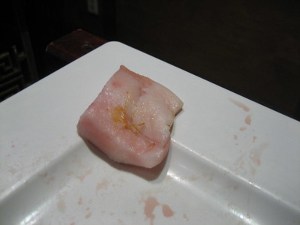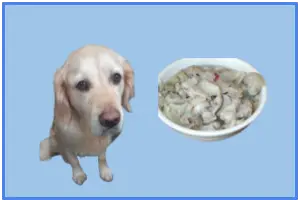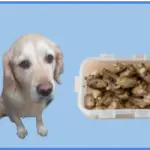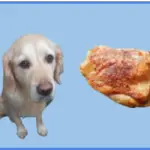
You love your dog and once in a while, you want to indulge him with a treat.
You probably already know that chocolates, walnuts, onions, avocado and grapes are some of the huge no no’s when it comes to dog food.
But what about fat trimmings? Sounds like something your cannine friend would appreciate doesn’t it?
Well in this article, we’ll take a deep dive into this all important question and address some of your concerns in detail.
We hope that by the end of it all, you go away better informed, less worried about your pet’s diet and much more confident in what you feed your dog.
1. How much fat does a dog need in their diet?
As a rule, dogs should eat a minimum of 5.5% fat in a day and no more than 10%. This is a moderate number compared to up to 50% carbohydrates that an adult dog can have in their diet. Other recommended nutrients are 10% protein and 2.5% to 4.5% fiber.
Keep in mind that dogs are in a sense like humans, in that no two dogs are completely alike. Even when it comes to their diet. You can’t prescribe the same meal plan for all dogs, just as you can’t for people.
In order to get a better idea of how much fat your pet needs, consider whether your dog has any pre-existing health issues. For instance if your pet has hyperlipidemia or diabetes, consult your vetenarian on how much fat you should be giving him in his diet.
You’ll also need to consider your dog’s breed and the type of activities he engages in.
Sporting dogs, hunting dogs, working dogs, and dogs who generally have a more active lifestyle and routine need more fat in their diet in comparison to lap dogs, like small chihuahua’s who like to be carried in handbags.
2. Why does a dog need fat in their diet?
Fat is a good thing. But before you take that as a final verdict, let’s look at why.
Eating fat will leave your dog feeling satisfied and full after his meal (just like you would). It also slows the rate of stomach emptying.
Believe it or not but some things need fat in order to get dissolved and broken down. These are fat-soluble vitamins; A, D, E, and K. When your dog eats a diet containing fat, it allows these vitamins to be taken up and used by his body.
Fat is stored under your dog’s skin to provide insulation from extreme temperatures. It’s also stored in membranes around the intestines for when your dog needs extra energy. Thirdly, fat is stored around his vital organs to cushion and protect him from physical shock. In short, fat provides energy, cushioning and insulation that your dog needs.
High fat diets make a pet’s fur shinier and are usually given to cats and dogs who enter shows. Granted they are overweight, they still look fabulous.
You will notice that even if you don’t feed your dog fat trimmings, all pet food contain fats because, to put it bluntly, it tastes good and contributes to the texture of the food
3. What are the side effects of too much fat in your dog’s diet?
Here’s the caveat. Even too much of a good thing can be a bad thing. Especially when it comes to too much fat in your dog’s diet.
To keep you at ease, we will say that a high fat diet will not cause heart disease in your healthy dog, but it certainly will in you.
Are you ready for the bad news?
A high fat diet can put your dog at risk of developing Pancreatitis. A good vet will tell you that even this can be subjective. Many dogs who eat a high fat diet do not develop prancreatitis. And many dogs who do, don’t have a history of eating high fat diets. But pancreatitis in dogs has a strong correlation to a high fat food diet, especially in animals who are not used to eating a fatty diet. Again consider, how much of the fat your pet will use up.
Nevertheless don’t get the idea that all dogs enjoy eating fat, when in fact some dogs don’t tolerate fat as well as others. Too much fat can give them diarrhea. As a genenral rule, if your dog has a history of pancreatitis, gatrointestinal issues, diabetes and high fat levels in their blood, then they would benefit more from a low fat diet.
In some instances, you might have a special reason to give your dog a high fat diet. Like if you have a thin dog because he is extremely active e.g military and police dogs and sled dogs. Pregnant or nursing pets should also have a high fat diet.
Having said that, here are some of the most common signs to be aware of in your dog if he has developed pancreatitis.
- Nausea
- Vomiting
- Diarrhea
- Abdominal pain
- Fever
- Decreased appetite
During a moderate to severe attack you might notice your dog take up a praying position, with his rear up in the air while his front legs are lowered and his head bowed. Severe attacks can cause acute shock, depression, and may even lead to death.
4. How easily can dogs digest fat?
After all the doom and gloom from the previous section, you’ll be happy to know that dogs digest fat really well. In fact, fat are a highly digestible form of energy for canines, as they metabolize 90% to 95% of the fat that are not stored up. Fat digestion is more complicated than proteing or carbohydrate, but a healthy dog will be able to digest it efficiently.
5. How much fat trimmings should you feed a dog?
This can be a point of confusion and contention. The figures on pet food labels are not reliable for deciphering if it has low, moderate,or high fat content. This is because such numbers only represent the percent by weight of fat in the food, and not the calory percentage.
To get a better idea of the calories on your good label, you need a calculator. To help you out, we’ve done the calculations for you in the table below.
6. Bacon grease vs beef fat vs chicken fat. Which is the healthiest?
* % = daily value
| Nutrition | Bacon Grease (100g) | Beef Tallow (100g) | Chicken Fat (100g) |
| Calories per serve | 897 | 902 | 900 |
| Total fat | 100g (128%) | 100g (128%) | 100g (128%) |
| Saturated fat | 39g (195%) | 50g (250%) | 30g (150%) |
| Cholesterol | 95mg (32%) | 109 mg (36%) | 85mg (28%) |
| Sodium | 150mg (7%) | ||
| Tot. Carbohydrate | 0g (0%) | 0g (0%) | 0g (0%) |
| Dietry Fiber | 0g (0%) | 0g (0%) | 0g (0%) |
| Sugar | |||
| Protein | 0g (0%) | 0g (0%) | 0g (0%) |
| Vitamin D | 2.50mcg (12%) | 0.70mcg (4%) | 4.80mcg (24%) |
| Calcium | 0.00mg (0%) | 0.00mg (0%) | 0mg (0%) |
| Iron | 0.00mg (0%) | 0.00mg (0%) | 0.00mg (0%) |
| Potassium | 0mg (0%) | 0mg 0%) | 0mg (0%) |
| * The % Daily Value (DV) tells you how much a nutrient in a serving of food contribute to a daily diet. 2,000 calories a day is used for general nutrition advice. |
Use this formula to calculate how much calories your dog needs daily:
Calorie (kcal) needs = 1.6 [70 x (weight in pounds ÷ 2.2)0.75]
As an example, a healthy 10 pound dog that is moderately active will need about 350 calories a day in order to maintain its weight. The amount of your dog’s calorie intake will depend on his needs.
If we were to stick to the condition that a dog should not have more than 10% fat in their food per day and with the information from the chart above, we can see that every 100g of bacon grease/beef tallow/chicken fat will give you 128% of fat.
However, here’s the catch. If you were to break this number down even further, you will get 2% of your dogs daily intake for every 0.4g of saturated fat in bacon grease,0.5g of beef tallow, and 0.3g of chicken fat.
So while they may have the same weight per serving, beef tallow will have the most percentage of fat, followed by bacon grease, and then chicken fat.
7. Raw vs cooked fat trimmings
Maybe you think that a raw food diet will have some health benefits for your dog. Maybe this is because you feel that since it’s a “thing” for humans, it could work for pets too. Maybe you worry that cooked food has less nutritional value because a lot of nutrients are killed off through heat. Or maybe you’re just curious and want to try a raw-meat based diet for your dog.
So here’s the thing. There are two schools of thought around this issue. One is for a raw-meat diet for pets and one against it. Let’s go with the ones against the idea first.
They argue that domestic pets are not like their wild counterparts who thrive on a raw meat diet. In fact, giving your dog a raw meat diet puts them at risk of exposure to parasites and bacteria.
Here are some parasites that have been found in pet foods that include raw meat:
- Toxoplasma and tapeworms
- Escherichia coli,
- Salmonella
- Listeria monocytogene
- Brucella suis
Bringing these pathogens into homes through raw, contaminated pet food, can also bring illness to people.
For the most part, no studies show that a raw meat diet for pets have health benefits.
[9] What is the healthiest way to add fat to a dog’s diet?
] Can fat trimmings be frozen so that they be saved for later?





